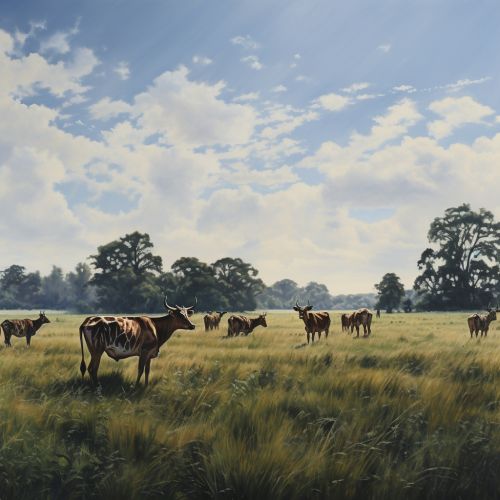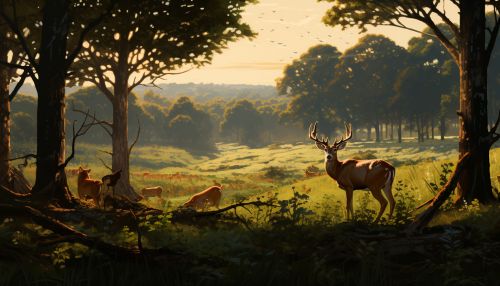Bovidae
Overview
The Bovidae family is a diverse group of 143 species of cloven-hoofed, ruminant mammals, which includes a variety of well-known animals such as domestic sheep, goats, bison, antelopes, gazelles, buffalo, and cattle. These species are distributed across a wide range of habitats, from the grasslands of Africa to the mountains of Asia and the forests of North America.


Characteristics
Bovids are characterized by their distinctive horns, which are present in both males and females in most species. These horns are made of keratin, the same material as human hair and nails, and grow from a bony core that is part of the skull. Unlike the antlers of deer, bovid horns are permanent and do not shed annually. The size, shape, and orientation of these horns can vary greatly between species and are often used as a means of species identification.
Classification
The Bovidae family is divided into two subfamilies: the Bovinae, which includes cattle, bison, and buffalo, and the Caprinae, which includes sheep, goats, and antelopes. These subfamilies are further divided into a number of tribes, each of which contains several genera. The classification of bovids is complex and has undergone numerous revisions as new genetic and morphological data have become available.
Evolution
The Bovidae family is believed to have originated in Asia during the Miocene epoch, around 20 million years ago. These early bovids were small, deer-like animals with simple horns. Over time, they diversified and spread to other parts of the world, adapting to a variety of different environments. Today, bovids are found on every continent except Antarctica and Australia.
Ecology and Behavior
Bovids are typically social animals, living in groups that can range from a few individuals to herds of several thousand. They are primarily herbivores, feeding on a variety of plant material, including grasses, leaves, and shoots. Many species have complex mating systems, with males often competing for access to females through displays of strength or dominance.
Conservation
While many species of bovids are common and widespread, others are threatened or endangered due to habitat loss, hunting, and disease. Conservation efforts for these species often involve habitat protection, captive breeding programs, and reintroduction efforts.
